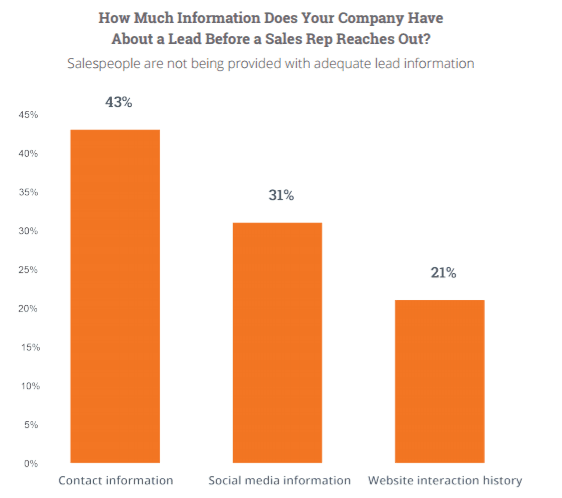 I recently sat in on a portrait of my brother’s young family. While a portrait is only one moment in time, a series of portraits over time show a better story: change and growth. Such is the ongoing story of HubSpot’s State of Inbound Marketing Report, showing the changes and advancements in marketing, year over year.
I recently sat in on a portrait of my brother’s young family. While a portrait is only one moment in time, a series of portraits over time show a better story: change and growth. Such is the ongoing story of HubSpot’s State of Inbound Marketing Report, showing the changes and advancements in marketing, year over year.
This year’s report begins a new story, one that hasn’t been told before; the story of how inbound affects sales.
How Inbound Affects Sales
“Marketing works for sales,” stated Jamie Glass, VP of Global Marketing at Welocalize, while speaking at InboundPHX at the end of September. She went on to explain that marketing is the fuel for driving revenue; marketing opens the conversations and sales closes them.
Unfortunately, the State of Inbound Marketing Report shows us that there’s a disconnect and marketing isn’t working for sales like it should. In fact, sales teams aren’t getting the majority of information that marketers are learning about their prospects through inbound marketing. According to the survey, fewer than half of sales reps even get contact information from marketing, the very minimum sales needs to know about a prospect.

This is a major problem for sales and for marketing. Salespeople are talking to prospects but are mostly blind about what prospects done on the website, what they’ve downloaded, or whether or not they might be ready to buy. Marketing, on the other hand, is being ineffective by not completing the cycle of finding a prospect, wooing them, and passing them on to sales to close.
How does lead information affect the ability to close sales? The report answers exactly this question.
How does lead information correlate with sales success? When we viewed this question in terms of successful vs. unsuccessful teams, a split emerged. While a staggering 83% of respondents from failing teams said they either didn’t know what information they had before contacting a lead, or that the question was not applicable to them, a mere 17% of successful teams gave the same answer. [Excerpt from the State of Inbound Marketing]
This means that without enough lead information, sales teams will fail. So what do they need to succeed?
What Sales Needs to Succeed
According to the report, sales top three difficulties in sales, in order, are prospecting, closing, and qualifying. How can marketing teams support sales teams in these efforts?
- Prospecting: With inbound marketing, this is a job that marketing can do really well. Inbound marketing brings the prospects to the company, instead of having to go out and find them. With the right marketing campaigns, prospects will come flowing into the sales funnel. Marketing just has to hand over the lead information at an agreed-upon point.
- Closing: If a prospect has become a sales qualified lead by downloading different offers from a marketing campaign, the marketing team will have an idea of what they’re interested in and what their concerns are. This means marketing can equip the sales team with either a list of questions they should be prepared to answer, or a few resources they can be ready to pass on to the prospect as soon as they ask for it (or both!). This will make sales look great in the eyes of the prospect and get them closer to closing.
- Qualifying: This is something that, if a prospect did come from inbound marketing efforts, can qualify a lead before he or she even reaches sales; that is, if both parties agree on how to qualify leads. Many systems can be used to qualify leads at various stages of the funnel. HubSpot, for example, scores leads by assigning numbers to certain actions taken on the website (and other tracked activities), and reaching a specific score will push the lead to the next level.
- Communicating. Sales and marketing leaders should meet frequently (at least monthly) to review leads passed to sales and to keep the lines of communication open. Maybe the lead scoring needs to be adjusted a little; or maybe marketing can create a nice glossy persona story to give to sales so they better understand the concerns of this prospect.
Understanding how marketing can help sales teams at each step of their process is easy. The hard part is figuring out how to implement and automate the process. Alaniz Marketing has experience in helping sales and marketing teams develop SLAs, set up lead scoring, and create innovative ways to get the right information to sales when they need it. What does the portrait of your sales and marketing teams look like?
![]()





